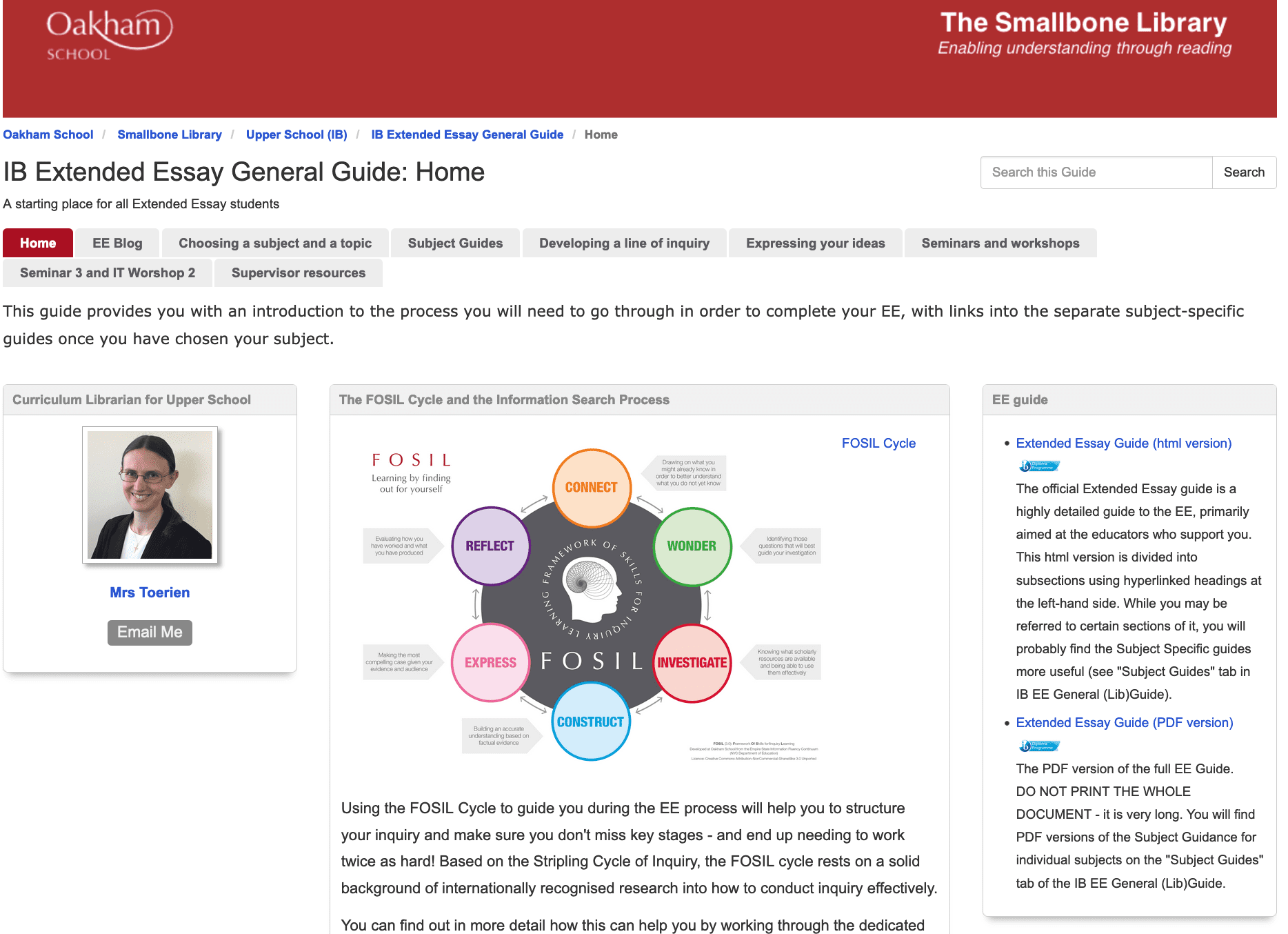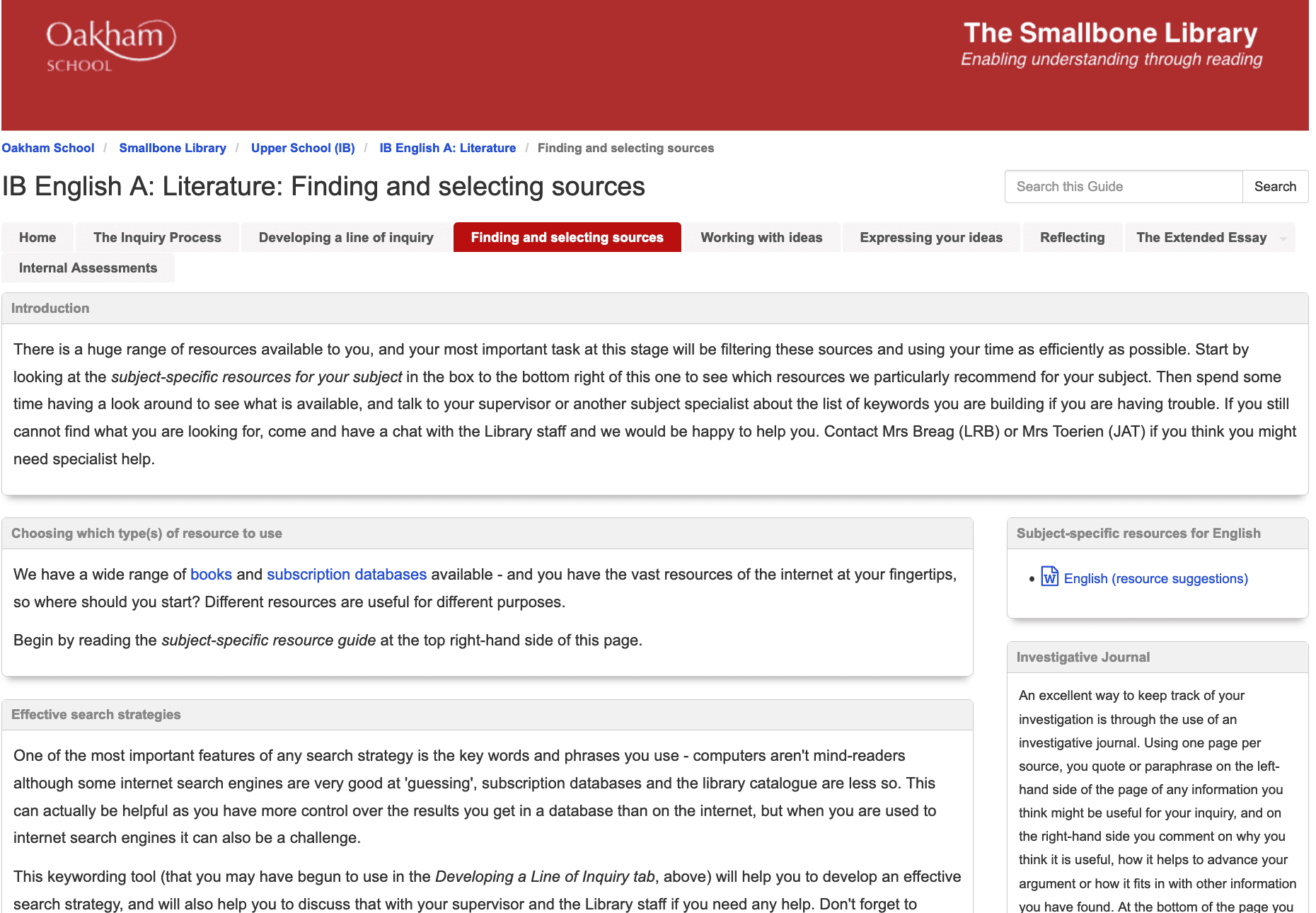Reply To: FOSIL and the IB Diploma Programme Extended Essay (EE)
Home › Forums › Inquiry and resource design › FOSIL and the IB Diploma Programme Extended Essay (EE) › Reply To: FOSIL and the IB Diploma Programme Extended Essay (EE)
Development of our support for 2019-20
I took over as Curriculum Librarian for Upper School in January 2020, although as a Library Assistant with responsibility for developing FOSIL resources I had had a role in supporting the previous CLfUS and been involved in EE support for a little while. I had also had some involvement in the process in a previous Librarian role at Oakham a few years ago. The Library’s critical role in the EE at Oakham extends back well over ten years, since Darryl first started as Head of Library, and he was personally responsible for our support of the EE process until 2018. The support has evolved and improved throughout that time, with important changes in the structure and content of the seminars, and in the IT workshops, that Darryl would be much more qualified to talk about than I am. I am going to concentrate on the last year and a half.
One of our main goals was to improve our asynchronous provision and make support more easily available to both students and supervisors throughout the process, rather than relying on students to contact us if they needed help between scheduled intervention points. I also wanted to make the process more transparent to supervisors, so that they could see exactly what support we provided, and direct students to it as necessary. It is important to bear in mind that supervisors are only allowed to spend 4-6 hours with students during the whole process (which at our school takes almost a year) so students do need to have other sources of support for key skills.
Following some research into what other IB schools around the world were doing (and a comment by John Royce when he ran some excellent on-site training for us) we decided to invest in LibGuides in October 2019. If you haven’t come across this, it is a essentially a website building package specifically designed for libraries (they describe it as “web publishing and content curation“. In the UK education sector, my impression is that these are most commonly used by university libraries, but they are widely used by schools (and public libraries) around the world. In particular, many IB schools have developed excellent LibGuides to support the EE. Getting an EE LibGuide up and running from scratch during my first year supporting the EE process was a challenge (and I owe a debt of gratitude to Susan Trower for the comprehensive guide she has put together for West Sound Academy, WA which helped me to think through the structure).
In my first attempt I decided to split the guide in two linked guides, with a General Extended Essay Guide that was suitable for all subjects:
and individual Subject Guides (e.g. this one for English) which could be used to provide subject specific guidance for both the EE and IAs (subject-based coursework):
Note that these links are to archived versions of last years’ guides, which are not in use any more! I learnt some important lessons about guide design, which I will share in the next post…
In general, the resource did exactly what I had hoped. It was a structured online guide to the whole process with downloadable resources and links that students could access whenever they wanted from anywhere in the world. We could also embed widgets such as videos and quizzes (we used Microsoft Stream and Forms to host/create these).
In retrospect we were very, very lucky because the resource was up and running and students had been introduced to it in December 2019, and worked with it during our usual targeted interventions in January and early March. So when the global COVID pandemic and school shutdowns hit in March we already had all our support available online. It was then relatively easy to shift Seminar 3 and IT workshop 1 (in late May 2020, during the first UK lockdown) into online video format with accompanying quizzes and email support (and individual Teams meetings where necessary) during the Writing Days. It would have been much harder to shift to online support so quickly if this resource hadn’t already been in place.
While this was a huge step forward in our EE support, it was very much a first attempt and as we worked through the year I could see all the structural mistakes I had made and things I wished I had set up differently in the first place. I couldn’t change it during that cycle because it would confuse the students – but I gritted my teeth, archived the first version over the summer and started all over again for October 2020 because I knew it would be better the second time! I’ll explain what needed to change in the post below.




